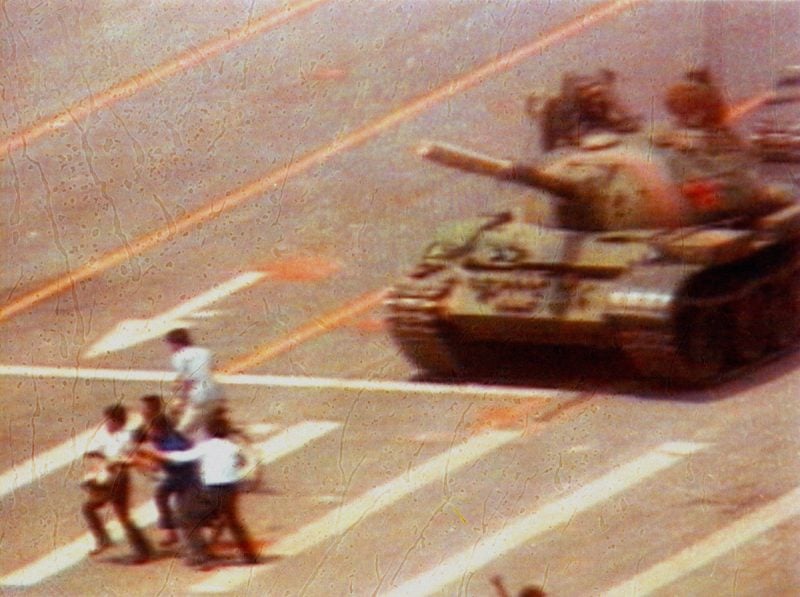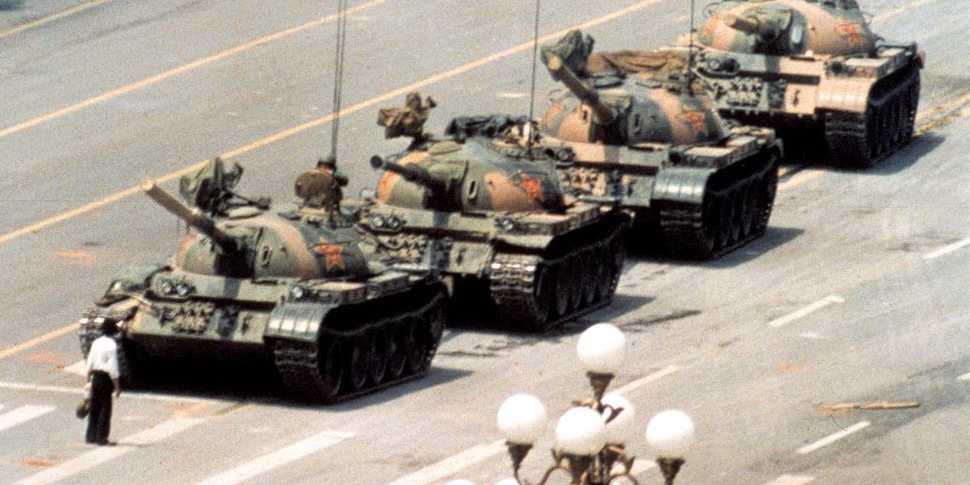- June 4, 2019, is the thirtieth anniversary of the Chinese Communist Party’s bloody crackdown on a pro-democracy protest in Beijing’s central Tiananmen Square.
- The protest started off in April as a student-led occupation calling for political and economic liberalization.
- But when the protesters and government failed to negotiate, Communist Party officials sent in a column of tanks and armed troops.
- The soldiers opened fire, the night ended in bloodshed, and hundreds of people died.
- China has written Tiananmen Square out of its history books, and routinely bans posts and keywords that mention the incident.
- Visit Business Insider’s homepage for more stories.
June 4, 2019, marks the thirtieth anniversary of Tiananmen Square crackdown, which saw a weekslong, student-led protest for democracy and liberalization end in hundreds of brutal deaths.
In the early hours of June 4, 1989, the Chinese Communist Party sent a column of tanks and armed troops into central Beijing, instructing them to “use any means” to clear out protesters who had been occupying it for the past few weeks.
It turned into a night of bloodshed that continued into the next morning, where thousands of soldiers fired into the crowd, killing and injuring hundreds of people. The exact toll remains unclear to this day.
Scroll down to learn about the history of the Tiananmen Square incident – through 30 photos the Chinese government doesn’t want you to see.
Harrison Jacobs, Mark Abadi, Adam Taylor, and Erin Fuchs contributed to this report.
The protests began in April 1989, after the death of ousted Communist Party leader Hu Yaobang.

During his tenure Hu tried to push the country toward a more open political and pro-market economic system, which won the support of many students from the country's elite universities.

Tens of thousands of students and workers gathered in Tiananmen Square in downtown Beijing as a result.

Tiananmen Square is a significant location because the mausoleum of China's founding father, Mao Zedong, and the Great Hall of the People - home to the country's main legislature - are both located there.
The protesters came with a long list of grievances, asking for greater freedom of speech, higher salaries, and controls on inflation. Following Hu's memorial on April 22, the students presented a list of demands for the government. They were rejected.

On April 26, the state-run People's Daily published an editorial calling the rallies "disturbances," and accusing the protesters of working against the Communist Party. This enraged the protesters even more.

Read an English translation of the editorial here.
By May 13, the crowd in Tiananmen Square had grown to about 300,000 people, with many spending their nights there. Here, two unidentified Beijing University students take a nap amid boxes of soft drinks.

More than a hundred students also started a hunger strike at this point.

Many also staged a sit-in in anticipation of a high-level visit by Mikhail Gorbachev, the leader of the Soviet Union.

On May 19, Communist Party General Secretary Zhao Ziyang — who advocated negotiating with the students — appeared at the protest and asked them for a compromise. This failed.

According to the BBC, Zhao told the crowd: "We have come too late."
Zhao's rival, Chinese Premier Li Peng, declared martial law shortly after.

The People's Liberation Army — China's military — began their march on Beijing on May 20, only to withdraw a few days later. Protesters would lecture the soldiers, asking them to join their cause.

Around the same time the student protest started to split, with no clear leader.

Regardless, they continued to take over Beijing's central square. For about a week, their occupation appeared unhindered, with no visible security presence.

Source: BBC
They even unloaded a 30-foot Styrofoam statue, modeled on the Statue of Liberty, in the square.

Many young people openly attacked the government. This protester's sign reads: "We no longer trust dirty public servants. We trust Mr Democracy."

Then the Communist Party decided once again to take action. On June 2, senior party officials imposed martial law to let "order be restored to the capital."

Source: ABC News
Some 250,000 troops started mobilizing the next day, with orders to enter the square at 1 a.m. on June 4 and clear it by 6 a.m.

The soldiers were given this standing military order, as recorded by historian Wu Renhua and cited by ABC News. Wu had been a protester at Tiananmen Square at the time.
They were also given permission to "act in self-defense and use any means to clear impediments," according to Tiananmen historian Wu Renhua.

A group of senior army generals and commanders opposed martial law, and wrote letters to Communist Party leaders not to unleash troops in Beijing, The New York Times reported, citing recent testimony by former lieutenant Jiang Lin. But the leaders ignored those calls.
The first report of live fire on civilians came at 10 p.m. on June 3, around six miles west of Tiananmen Square, ABC News reported. The army reached the square at 1:30 a.m. on June 4.

Source: ABC News
Protesters resisted when troops first entered the square. Most of the occupiers were unarmed, but some had rocks and other weapons.

Violence erupted, with armored personnel carriers ramming through student lines and firing on protesters as they tried to block them from entering the square.

After a night of bloodshed, the square was cleared. The Communist Party said at the time that 241 people, including soldiers, died, and 7,000 were injured.

Source: PBS
Other numbers have since circulated, with one UK diplomatic memo putting the figure at 10,000. Many deaths happened outside the square, with soldiers firing directly at unarmed protesters.

Secret UK diplomatic cables released in 2017 put the death toll to more than 10,000, the BBC reported.
Regardless, this was the most violent night the country has ever seen under communist rule.

After clearing Tiananmen Square on June 5, soldiers continued to drive down Beijing's main roads, with some of them firing sporadically at protesters who continued to block their way.

As a column of tanks drove down Chang'an Boulevard near Tiananmen Square, one man stepped in front of them — resulting in this iconic photo of the event.

Here's what happened, according to PBS Frontline:
"About midday, as a column of tanks slowly moves along Chang'an Boulevard toward Tiananmen Square, an unarmed young man carrying shopping bags suddenly steps out in front of the tanks.
"Instead of running over him, the first tank tries to go around, but the young man steps in front of it again. They repeat this maneuver several more times before the tank stops and turns off its motor.
"The young man climbs on top of the tank and speaks to the driver before jumping back down again. Soon, the young man is whisked to the side of the road by an unidentified group of people and disappears into the crowd."
The identity and whereabouts of the protester — named "Tank Man" — remains unknown. Jeff Widener, the American photographer who took the photo of him, received a Pulitzer Prize finalist nomination for the photo in 1990.

Chinese leader Deng Xiaoping appeared for the first time since the crackdown on June 9, praising the military for its work over the past few days, and labeling the protesters counter-revolutionaries who wanted to overthrow communism.

Source: BBC
Tens of thousands of people were arrested after the protests, and an unknown number were likely executed, according to PBS.

Source: PBS
China has completely written Tiananmen Square out of its history books, and bans searches and keywords related to the incident on its social media in the run-up to its anniversary every year.

That paranoia has likely increased under President Xi Jinping, whose crackdown on the country's internet continues to increase.
In the weeks running up to the thirtieth anniversary of the Tiananmen Square incident, Chinese authorities amped up their surveillance, raids, and detentions of the country's activists.
Read more: China's 'Great Firewall' is taller than ever under 'president-for-life' Xi Jinping

